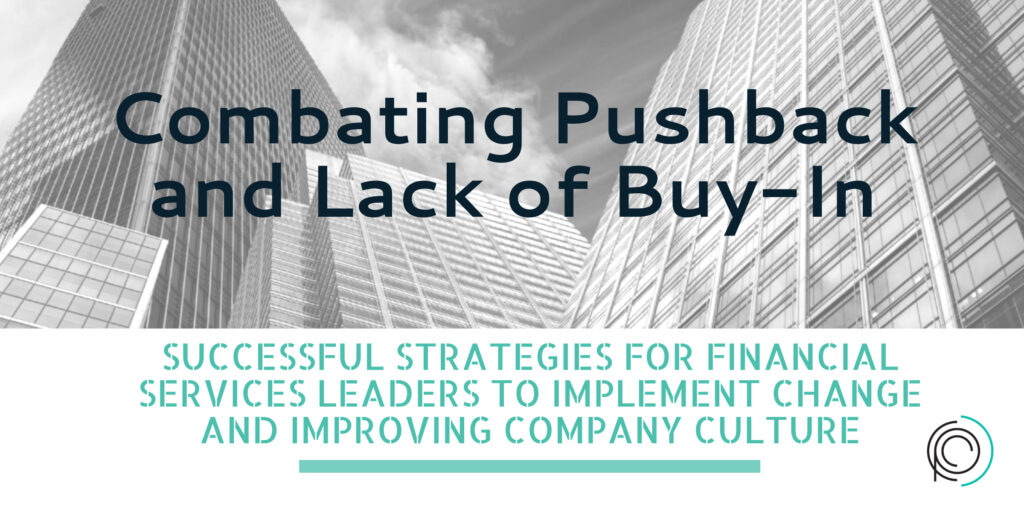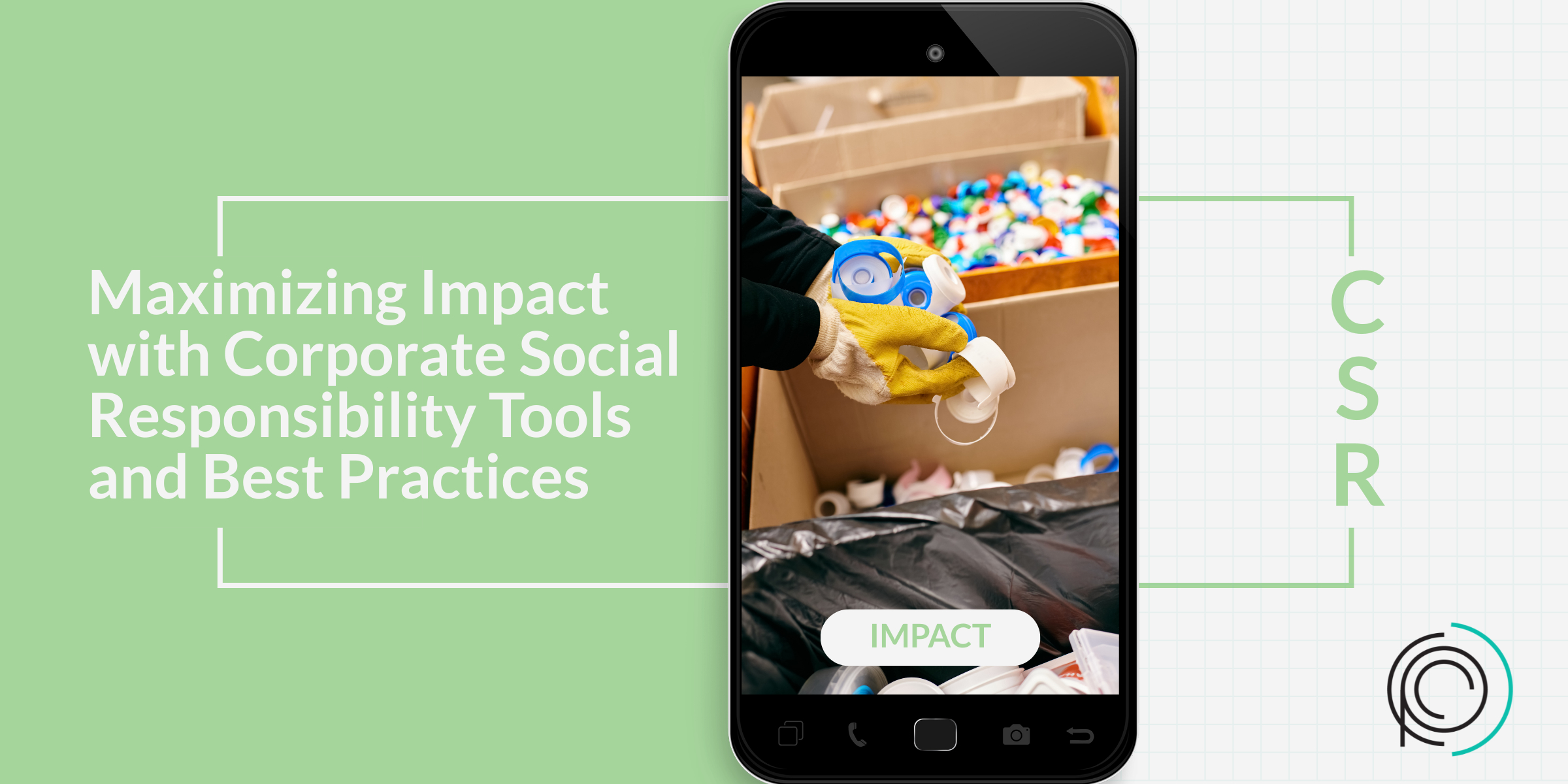Change is Here: Overcoming Resistance and Driving Transformation in Finance
Change is inevitable in financial services as external factors such as technology advancements, market dynamics, and consumer preferences continually evolve. Financial services have seen some changes over the last decade but much of it remains the same. Many employees in finance embrace change with open arms given the lean environment and rising customer demand but we all know change is hard even when we want it.
Many people naturally fear change and may resist it because adhering to their traditional ways of doing things feels safer and more comfortable. Unfortunately, this resistance can spell significant trouble when it comes to implementing new initiatives designed to achieve lofty goals. Without the widespread support and acceptance of change, new projects and goals can quickly become derailed, leading to failure.
Resistance to change can lead to a myriad of negative outcomes, including employee disengagement, lower productivity, and a palpable lack of alignment with the company’s overall objectives. This misalignment can not only stifle growth but also create a toxic work environment where innovation is stifled.
To overcome these challenges and ensure success in the implementation of change, there are well-established strategies that companies can deploy. These include clear and open communication about the benefits of the change, providing adequate training and support to help employees adapt, and creating a culture that values flexibility and innovation. By fostering a positive and proactive corporate culture that embraces change rather than fears it, companies can navigate the obstacles of transition more smoothly and ensure the long-term success of their new initiatives.
One fundamental strategy is to understand and address operational gaps that may hinder change adoption and implementation. Identifying these gaps and determining their root causes is crucial in designing effective change management plans. By analyzing various aspects such as process inefficiencies, outdated systems, or inadequate training, a company can target specific areas for improvement and develop practical solutions to streamline operations and prepare for change.
In addition to filling operational gaps, it is crucial to include all team members in the change process. Open and transparent communication is the cornerstone of gaining buy-in and support from employees. By actively involving individuals from various levels, departments, and functions, companies can cultivate a sense of ownership and accountability among their staff. This ensures that everyone fully grasps the reasons for the change and recognizes the benefits it can deliver. Moreover, this inclusive approach allows employees to offer their valuable insights and suggestions, which promotes a culture of collaboration and continuous improvement across the organization.
Maintaining a transparent dialogue with employees throughout the change process is of paramount importance. Effective change management is characterized by clear, open communication regarding the objectives, progress, and any potential obstacles that might emerge along the way. By keeping employees consistently informed and engaged, companies can mitigate fears and uncertainties while fostering an atmosphere of trust. Transparent communication also enables companies to swiftly address any concerns or questions, thereby preventing the spread of misinformation or misunderstandings.
By adopting these strategies, any company can enhance its readiness for change and boost its long-term effectiveness. Embracing change and fostering a positive corporate culture that values innovation and adaptation can position businesses for enduring success in a constantly changing marketplace. Furthermore, companies that prioritize these practices not only navigate changes more smoothly but also emerge as leaders in innovation, setting the standard for excellence in their respective industries. This proactive stance on change management can attract top talent, inspire loyalty among employees, and secure a competitive edge, ensuring that the business remains resilient and agile in the face of future challenges.
Let’s dive into how.
- Understand Current Operations and Gaps: To effectively improve a team or organizational culture, it’s crucial to have a comprehensive understanding of the current operations and identify the areas that need improvement. This can be achieved through a thorough review of the existing processes, analytical data, and communication structures. By conducting this evaluation, key areas that may be hindering productivity can be identified, enabling the organization to pinpoint potential gaps that need to be addressed.
Once these gaps are recognized, it is essential to develop benchmarks for improvement. Creating clear goals and benchmarks allows the organization to measure progress and ensure that any changes implemented are effective in achieving the desired outcomes. By setting these benchmarks, the organization can track its progress, make necessary adjustments along the way, and ensure the sustainability of improvements over time.
By taking a meticulous approach to understanding the current operations and addressing the identified gaps, an organization can create a more productive team and a positive culture. This involves being proactive in identifying challenges and developing strategies to overcome them. By doing so, the organization can position itself for success and foster a work environment that supports growth and fosters innovation. Ultimately, this will lead to enhanced productivity, enhanced employee engagement, and overall organizational success.
- Involve all Stakeholders: All stakeholders need to be included in the conversation; team members, managers, and upper management. This is because everyone has a different perspective on business, and what isn’t working from their role in the business. Gathering everyone’s feedback is crucial because it will help the change management team understand what’s going to work and what’s not going to work when it comes to identifying the problems and proposing solutions. Additionally, showing your team how their feedback is being considered also helps with feeling valued and heard, adding to the probability of buying into the change that’s to come.
- Transparent Communication: The management team responsible for implementing change should provide ongoing, transparent communication and feedback to those involved. Effective communication will build trust and transparency, making it easier for change management teams to address people’s fears and concerns and maintain trust throughout the process. Additionally, regularly scheduled update meetings, feedback collection methods, and toolkits that clarify expectations of what will be complementary will encourage and support team members and their various roles.
- Proper Project Planning: Efficient project planning is essential for the success of any project. It helps in monitoring progress and ensuring that objectives are met within the allocated time frame. To achieve this, teams need to utilize project management tools and employ an experienced project manager who can effectively communicate with teams on the ground and stakeholders to maintain alignment. This is crucial as it helps to ensure that everyone involved in the project is on the same page and working towards a common goal. Through meticulous planning, teams can identify potential risks and challenges, allowing them to take appropriate measures to mitigate them. This not only fosters confidence among team members but also streamlines operations, enabling tasks to be completed more efficiently. In addition, efficient project planning helps to minimize team-wide frustrations by providing a clear road map that outlines the tasks, deadlines, and responsibilities of each team member. This clarity reduces confusion and allows for effective collaboration, resulting in increased productivity and successful project completion. Therefore, effective project planning is a key component of any successful project and should not be overlooked.
- Scalable Change Management Practices: Implementing scalable change management practices is crucial for driving impactful transformations within a company. Organizations need to avoid starting from scratch whenever they encounter challenges or introduce new ideas. Instead, focus on developing strategies to scale their change management practices effectively.
One approach is to provide comprehensive training programs that include the entire organization. This ensures that all employees understand why these changes are necessary and how their roles and responsibilities will be affected. By offering clear instructions, individuals can better grasp their place within the transformation process.
Furthermore, it is essential to establish a consistent flow of communication throughout the organization regarding the required adjustments. This involves delivering messages about what methods are effective in ensuring successful implementation and maximizing employee buy-in.
Scalable change management builds upon established principles and allows companies to retain valuable knowledge gained through previous experiences. This continuity facilitates continuous improvement efforts aimed at future developments and optimizations. Adopting scalable change management practices empowers organizations to drive transformative initiatives with confidence while maximizing results and ensuring long-term success.
Understanding, planning, team input, communication, and scalable change are key components to a company’s successful change implementation. When key stakeholders successfully buy into and work towards change, the company can produce effective change alongside an improved culture that works for everyone involved. With company-wide comprehension of the change management process, it’s far less daunting to take proactive steps to create a more productive organization and culture. A successful change implementation requires the support and commitment of key stakeholders who are willing to embrace the change and work towards its realization. When this happens, not only does the company achieve effective change, but it also cultivates an improved culture that benefits everyone involved.
By ensuring that employees throughout the organization comprehend the change management process, the daunting nature of change is reduced, and proactive steps can be taken to create a more productive organization and culture. If you are facing resistance to change and need assistance in overcoming it, we invite you to book a no-obligation consultation with one of our experts today.







